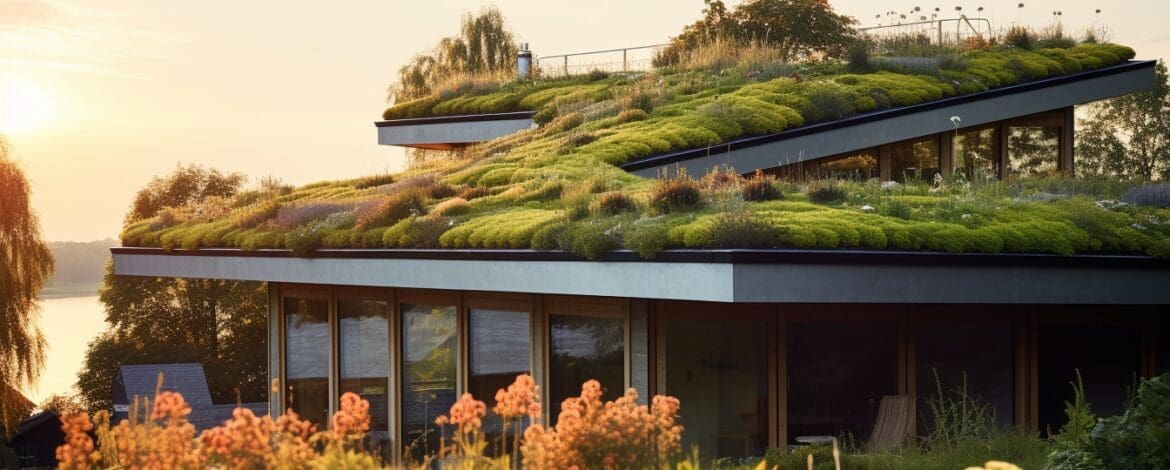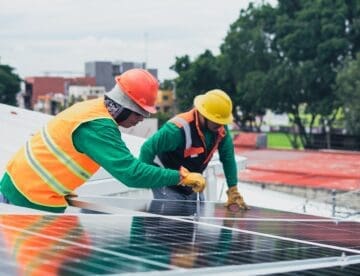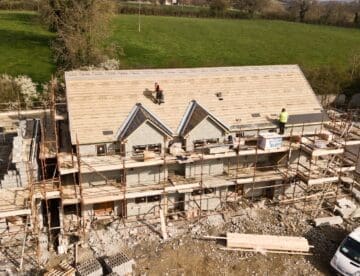Are you sick and tired of high energy bills and concerned about your impact on the environment? It’s time to consider revolutionizing your roof with sustainable and green solutions.
Innovations in Green Roofing
We are all more aware of the need to reduce our carbon footprint and embrace more sustainable living. Innovations in the roofing industry have resulted in groundbreaking and eco-friendly roofing options. These new solutions can help reduce your carbon footprint, mitigate the effects of climate change, and slash energy costs.
This article dives deep into some of the best green solutions for your roof in Florida. You will learn about various sustainable roofing and how they can revolutionize how you think about shelter.
The Rise of Green Roofing
The history of green roofs goes back to ancient times. However, it was in the 1960s when growing vegetation on roofs for its environmental and insulation benefits took off. Also called a living roof, green roof technology typically uses a waterproofing membrane, a drainage and irrigation system, and a root barrier.
Green roofs use a combination of vegetation and a suitable substrate for growing plants, grasses, and mosses. Some green roof solutions also incorporate solar panels and reflective surfaces to increase the property’s energy efficiency.
According to the University of Florida, green roofs can have tremendous environmental benefits for residents of the Sunshine State. Here are a few:
- Reduced air pollution
- Carbon sequestration
- Rainwater runoff control
- Urban noise reduction
- Reduce indoor cooling loads by up to 70 percent
- Cost savings
In addition, green roofs in Florida have improved longevity and thermal insulation capacity. Also, the long-term benefits can outweigh the initial costs of most green roofing projects.
Types of Green Roofing Solutions
Several green roofing solutions are suitable for various types of residential and commercial properties in Florida.
Let’s briefly consider a few options.
Cool Roofs
A cool roof is designed to reflect sunlight and absorb less heat than a standard roof. It typically features reflective coatings or shingles with high solar reflectance. The result is a lower roof temperature and lower indoor cooling costs during hot weather. Also, cool roofs decrease urban air temperature, helping to reduce urban heat island effects and smog.
The Miami Herald reports that a cool roof could save Florida residents up to $150 on cooling costs annually.
Green/Living Roofs
Green roofs are covered with vegetation like grass, plants, or even small trees. They provide insulation, reduce urban heat, manage rainwater, and create green spaces in urban areas. Their environmental benefits include improved air quality, energy savings, and enhanced biodiversity.
Solar Roofs
Solar roofs have photovoltaic panels or solar tiles that convert sunlight into electricity. They harness renewable energy, reducing reliance on traditional power sources. Solar roofs are eco-friendly, generate clean energy, and can earn homeowners money through surplus energy production or government incentives.
Solar roofs are especially useful for people living in Florida, where residents enjoy an average of 230 days of sunshine annually.
Recycled Roofing
Recycled roofing materials can help to reduce your carbon footprint. For example, shingles can be made from reclaimed or recycled materials like rubber, plastic, or metal. These sustainable roofing options reduce waste and environmental impact. They are typically as robust as traditional roofing materials but have the added benefit of being eco-friendly.
Sustainable Wood & Shake Roofs
Sustainable wood and shake roofs use certified or reclaimed wood from well-managed forests. These materials are typically treated to enhance durability and fire resistance. They provide a natural, rustic aesthetic look while promoting responsible forestry practices and minimizing environmental harm.
Benefits of Opting for Green Roofing
Opting for green roofing rather than a traditional roof offers numerous benefits for homes in Florida. In most cases, the environmental benefit, lower utility bills, and roof durability make a compelling argument to switch to an eco-friendlier roofing system. Additionally, the improved aesthetic appeal of your property is a bonus.
Let’s look briefly at four benefits homeowners in Florida can expect from having a green roof shelter their properties.
Environmental Benefits
Reducing energy consumption is the greatest benefit of a green roof. Insulating a residential or commercial building with a vegetative roof helps lower heating and cooling needs, thus reducing your carbon footprint.
Additionally, the vegetation on a true green roofing system captures carbon dioxide, improves air quality, and helps manage rainwater and runoff more effectively. Moreover, the roofs create habitats for wildlife, enhancing urban biodiversity and combat.
Economic Benefits
Green roof systems offer Florida homeowners several economic benefits. For example, a review of over 200 studies found that green roofs can benefit your pocket in the following ways:
- Green roofing extends the lifespan of the roof membrane, reducing maintenance and replacement costs. Studies show a green roof lasts up to twice as long as a conventional roof.
- Enhanced insulation lowers energy bills by decreasing heating and cooling expenses.
- A green roof can increase property value more than a typical asphalt shingle roof. Therefore, you may be able to sell your house faster and for a higher price.
Health Benefits
Many researchers have found that a garden roof or green roof has several health benefits. The most significant is that they absorb carbon dioxide and release oxygen, contributing to cleaner air. Also, EPA reports that using green roofs in cities can reduce the heat island effect. For example, the temperature of a garden roof can be 30°F to 40°F lower than a typical roof.
Durability and Longevity
A green roof’s excellent durability and longevity make it cost-effective in the long run. The protective layer of vegetation and insulation shields the roof membrane from the elements, prolonging its life. Studies show that green roofs have a typical life span of 50 years—far exceeding traditional roofs.
The green roof’s ability to withstand weather, temperature fluctuations, and UV exposure ensures lasting performance and low maintenance costs.
Challenges and Considerations
One of the considerations of a green roof is installation expenses. Because of the technology and materials involved, the initial cost can be double compared to a traditional roof. However, the long-term energy savings and environmental benefits can offset these challenges, making green roofs a worthwhile investment.
Making the Shift to Green Roofing
Are you considering a green roof solution for your home in Florida? If so, getting the best advice from an experienced roofing contractor with extensive experience in green roof solutions is crucial. They can assess your property’s feasibility, understand local regulations, and choose the right type of roof for your area and property.
Looking Ahead: The Future of Green Roofing
Green roof solutions have many benefits for homeowners in Florida. As green roof technology and materials evolve, more people are likely to join the revolution and switch to green roofs.
You can view your roof as more than a shelter from the harsh climate in the Sunshine State. Instead, the roof works for you and the local community. It helps cut heating and air-conditioning costs and contributes to cleaner air. Are you seeking a sustainable roofing solution that reduces energy costs and fights climate change? If so, contact Code Engineered Systems today. Our team and expert industry experience can help you choose the right green roof solution for your home.




